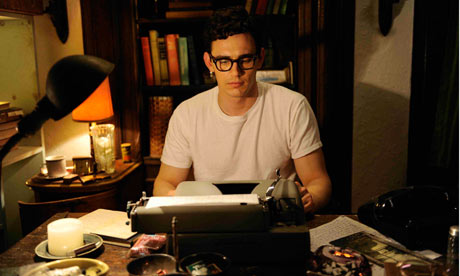The word howl stirs a number of images to mind. Wind whipping through the trees on a cold winter night. Wolves calling to each other in the night before Liam Neeson tapes broken liquor bottles to his hands and fights them. But to an entire generation, the word howl is equated with one name; Allen Ginsberg, both as his most well-known written work and as the recent biopic starring James Franco.
An American poet and key figure of the Beat Generation that so many identify with the 1950s, Allen Ginsberg became one of the most important voices of the era. Alongside the likes of Jack Kerouac, Neal Cassaday and William S. Burroughs, Ginsberg strove to shine a light onto issues the world he grew up in actively tried to repress. And, of all his amazing writing, Howl is generally respected as his greatest.
Written in 1955 and publisher in 1956, Howl consists of three parts and a footnote. It examines a number of topics, including the outcasts of Ginsberg’s America, the state of industrial civilization and a series of biographical references, some very direct and some through allusions. It was also the subject of an obscenity trial in 1957 due its frequent references to illicit drugs and both heterosexual and homosexual practices.
The events surrounding the obscenity trial are at the core of the film, as well as the debut of the poem. This moment is key to history and the film as the debut of Howl at the Six Gallery reading in 1955 has been described as the first real public exhibition of the Beat Generation and the San Fransisco Renaissance.
Howl stars James Franco in the role of Allen Ginsberg and Jon Hamm as his defence lawyer, Jake Erlich. There are also portrayals of Neal Cassaday, Jack Kerouac and Lawrence Ferlinghetti. Naturally, Franco’s portrayal of Ginsberg is integral to the film and he delivers well-executed performance with the level of care it deserves.
My only real issue with the film is the exclusion of Shig Murao. As I understand the history of the incident, Shig Murao was the bookseller who was actually arrested for selling Howl to an undercover San Fransisco police officer and spent time in jail. Ferlinghetti was later booked as the publisher, though not arrested on site.
The film inexplicably leaves Shig Murao out, focusing on Ginsberg and Ferlinghetti instead. While the film is still enjoyable, it does make the reader question the historical accuracy of this biopic and leaves us to speculate as to why this key figure was left out.
Overall, it is a good film that handles the importance of the subject matter with the dignity it deserves, though the film is inconsistent in spots both in tone and pacing. It is still a must watch for fans of Allen Ginsberg and the Beat Generation.
——
Ian Goodwillie is a columnist for the Spectator Tribune. Follow him on Twitter at @ThePrairieGeek and on Tumblr at iangoodwillie.tumblr.com.
Follow us on Twitter: @SpectatorTrib
